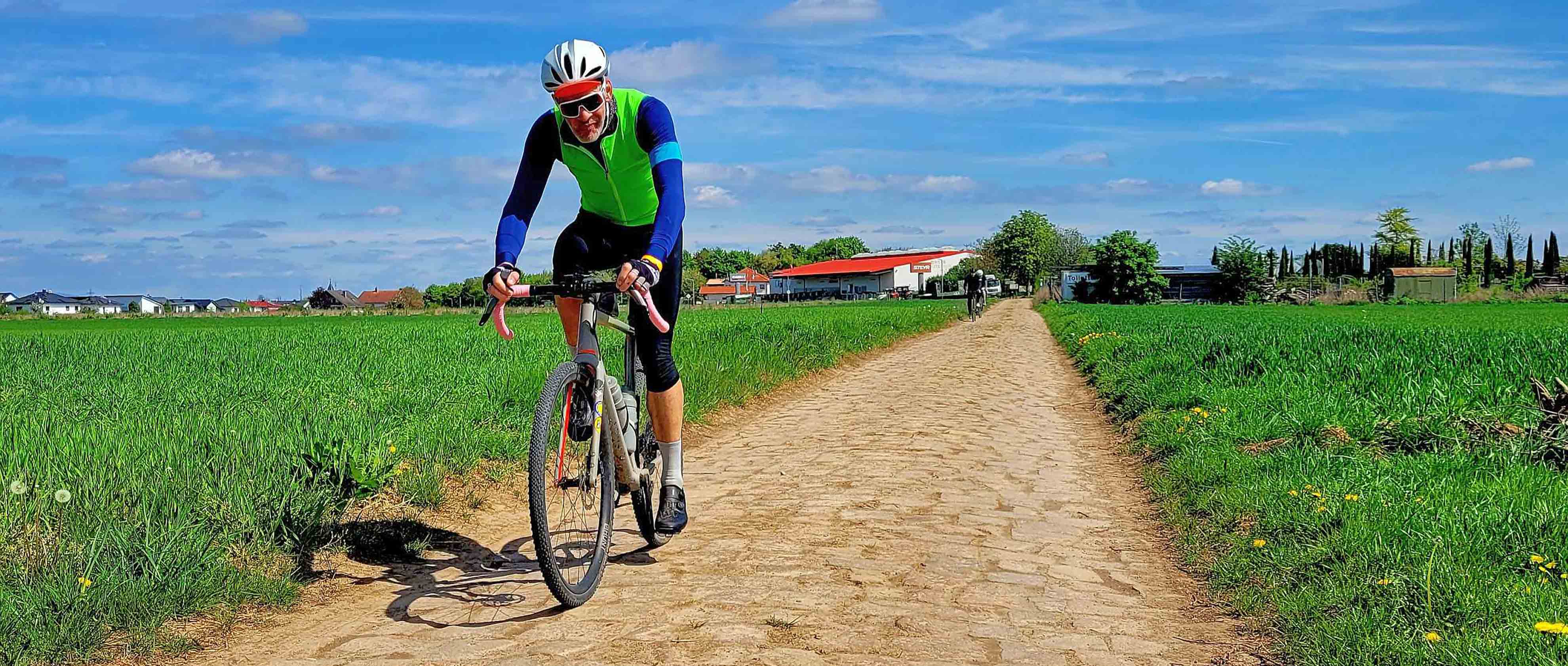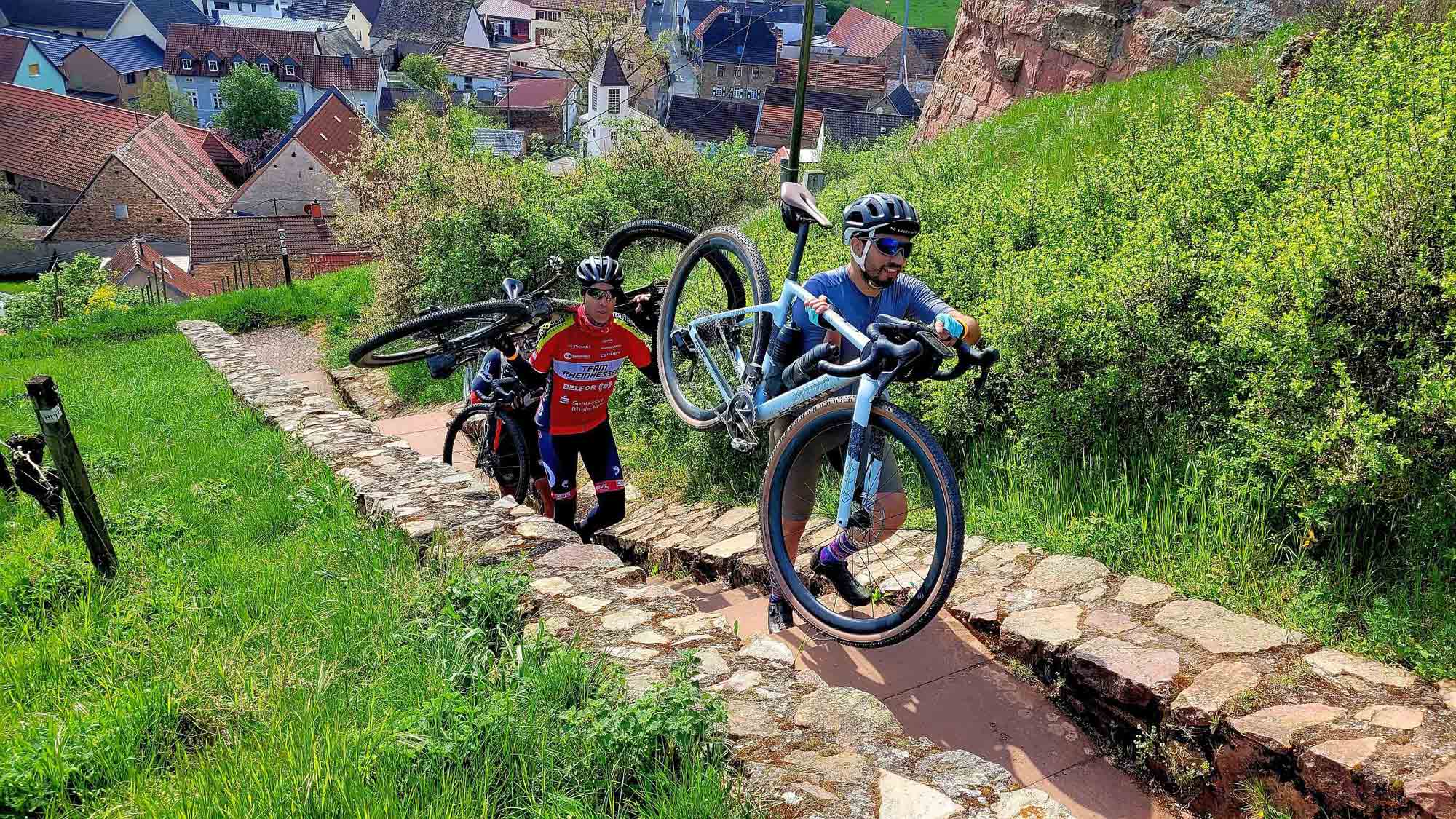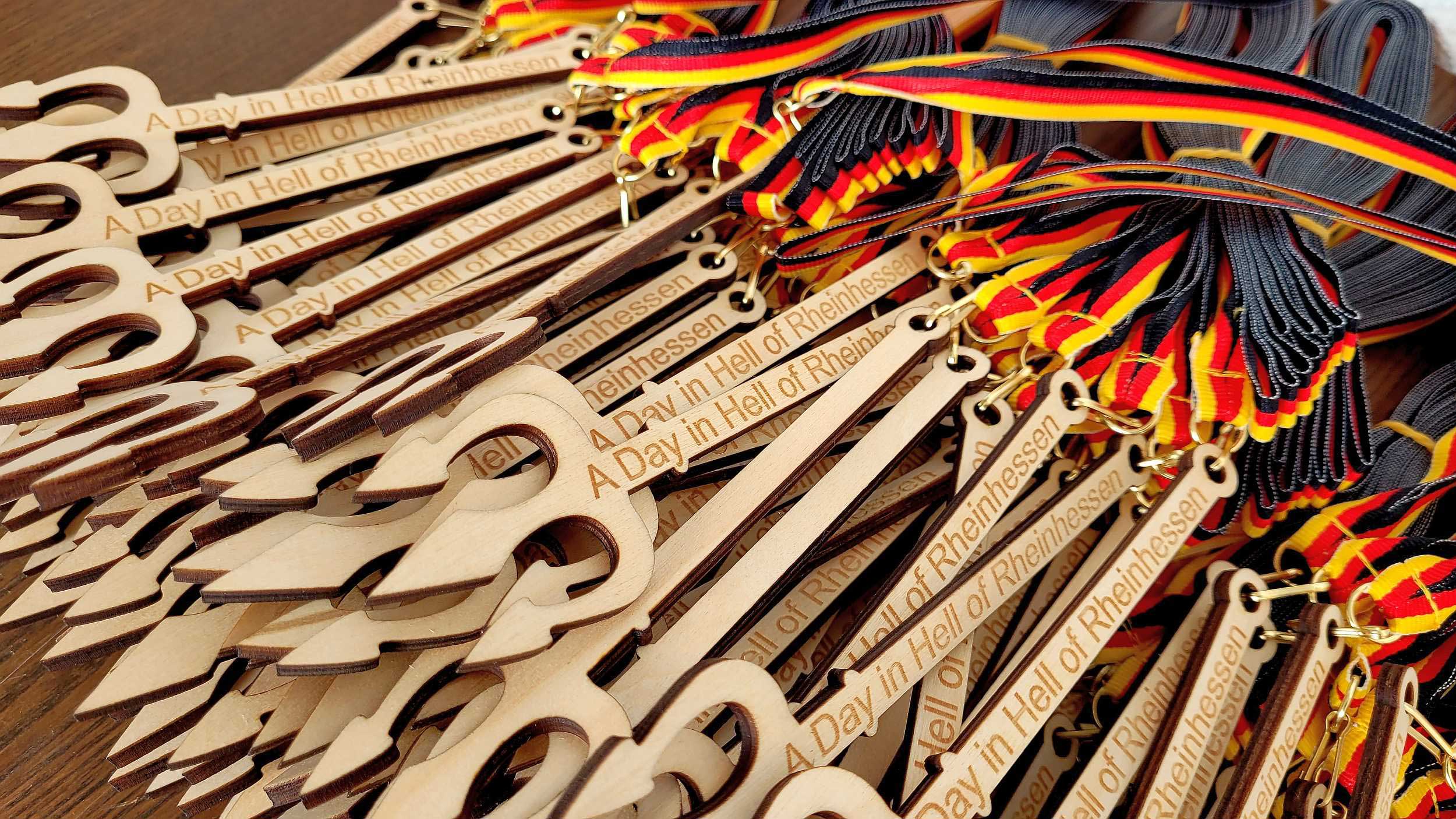The old cobblestone paths of Rheinhessen are a reminder of times when the pace was slower and the roads more arduous – and therefore more intense. Riding them today on a gravel bike is like taking a small journey through time, with every meter carrying a piece of history. In their imperfection lies a unique beauty – raw, authentic and grounded, just like gravel biking itself. Timo Rokitta reports back from the recent A Day in Hell of Rheinhessen which took participants across some of Germany’s finest sections of pavé.

Few parts of the cycling season are as legendary, as feared and at the same time as fascinating as the spring classics – especially those events featuring cobblestone sections. In Belgium and northern France, where spring often starts cold, wet and windy, heroes are made. Because here, it's not just about strength and speed – character is what counts. The legendary pavé – uneven, often centuries-old cobblestones – turn cycling into an epic adventure. And these cobbles aren't just "rough terrain" – each classic features its own unique character. No race symbolises cobblestones more than Paris–Roubaix. Over 250 kilometers long, with around 50 kilometers on pavé – it's pure madness on two wheels. Anyone who merely reaches the finish line here is a hero – a true fighter.
Rheinhessen, often lovingly referred to as the "land of a thousand hills," lies in the south-west of Germany, nestled between the Rhine to the east, the Hunsrück to the west, the North Palatinate Highlands to the south and the Taunus to the north.
Hidden between vineyards, small villages and historic town centers, they wind through the landscape: ancient cobbled paths that still define the face of many Rheinhessen towns. They tell tales of times long past, of wagons and winemakers, of craftsmanship and history. In Rheinhessen, these paths are more than just means of transportation – they are cultural heritage beneath your feet.
So what could be more fitting than hosting a gravel event here that stands out from the rest? A Day in Hell of Rheinhessen is the logical consequence – a celebration of gravel bikes, pavé and the joy of the landscape.
The cobbled paths in Rheinhessen date back in part to the 18th and 19th centuries – some sections even earlier. Built in a time when roads were made for horse-drawn carriages, ox carts, and pedestrians, they served trade, wine transport and connection between villages, fields and markets. Especially in wine villages like Bechtheim, Nierstein, Oppenheim, or Flonheim, many of these cobbled paths have been preserved – often in narrow alleyways, courtyards, or as historic sunken roads winding through vineyards.
The construction of these old paths was true craftsmanship. Large, irregular stones – often basalt, porphyry, or sandstone, depending on local availability – were laid by hand. Building such roads required not just physical strength but precise knowledge of drainage, durability and use. The typical arched shape of the paths – the so-called “Kehle” – ensured that rainwater could run off to the sides, preventing puddles from forming in the center.
At exactly 8 a.m. on Easter Saturday, the first of over 100 participants set off. Ahead of them lay 180 or 130 kilometers, while those riding the shorter distances of 100 or 60 kilometers started from 9 a.m.
The route first led west into the charming Zellertal valley, where one of the bumpiest pavé sections awaited after 15 kilometers. Fortunately, it was downhill, which somewhat softened the blow to hands and body at higher speed. From a following plateau, riders were rewarded with glorious views of the Rhine plain and could catch their breath during the descent. In the small town of Flörsheim-Dalsheim, a cobbled section ran alongside an old town wall, so narrow that the handlebars barely fit through.
A staircase in Westhofen provided a quick adrenaline rush 10 kilometers later. Here, riders had to shoulder their gravel bikes and carry them down into the historic town center. Skirting the picturesque Seebach spring then made up for the short hike. Over another plateau, the participants reached Nierstein, where a rich refreshment stop awaited after 70 kilometers.

At the old castle in Schwabsburg, bikes had to be carried once more. Bravely, the participants climbed the steep steps into the vineyards. From there, the route led into a series of pavé sections, appearing at ever-shorter intervals. One of the most challenging cobbled stretches served as the cherry on top, leading up into the vineyards of Laubenheim. The view over the Rhine and the Frankfurt skyline was ample reward for the sweat left behind.
After a second chance to refuel in Nierstein, the route continued as a Tour d’Honneur along the RheinTerrassenweg back to Worms. Along the way, riders tackled five more climbs – some steeper than others – through the region’s famous sunken lanes.

At the finish line, delicious pasta with tuna sauce and a cold beer awaited the finishers. As a reward for their effort – and as a lasting memory – each received an exclusive medal and a gravel-style thermal cap.
If you would like to find out more about the other gravel events that Timo runs, then check out his website.
If you would like to try out his route for yourself, you can find the details here: